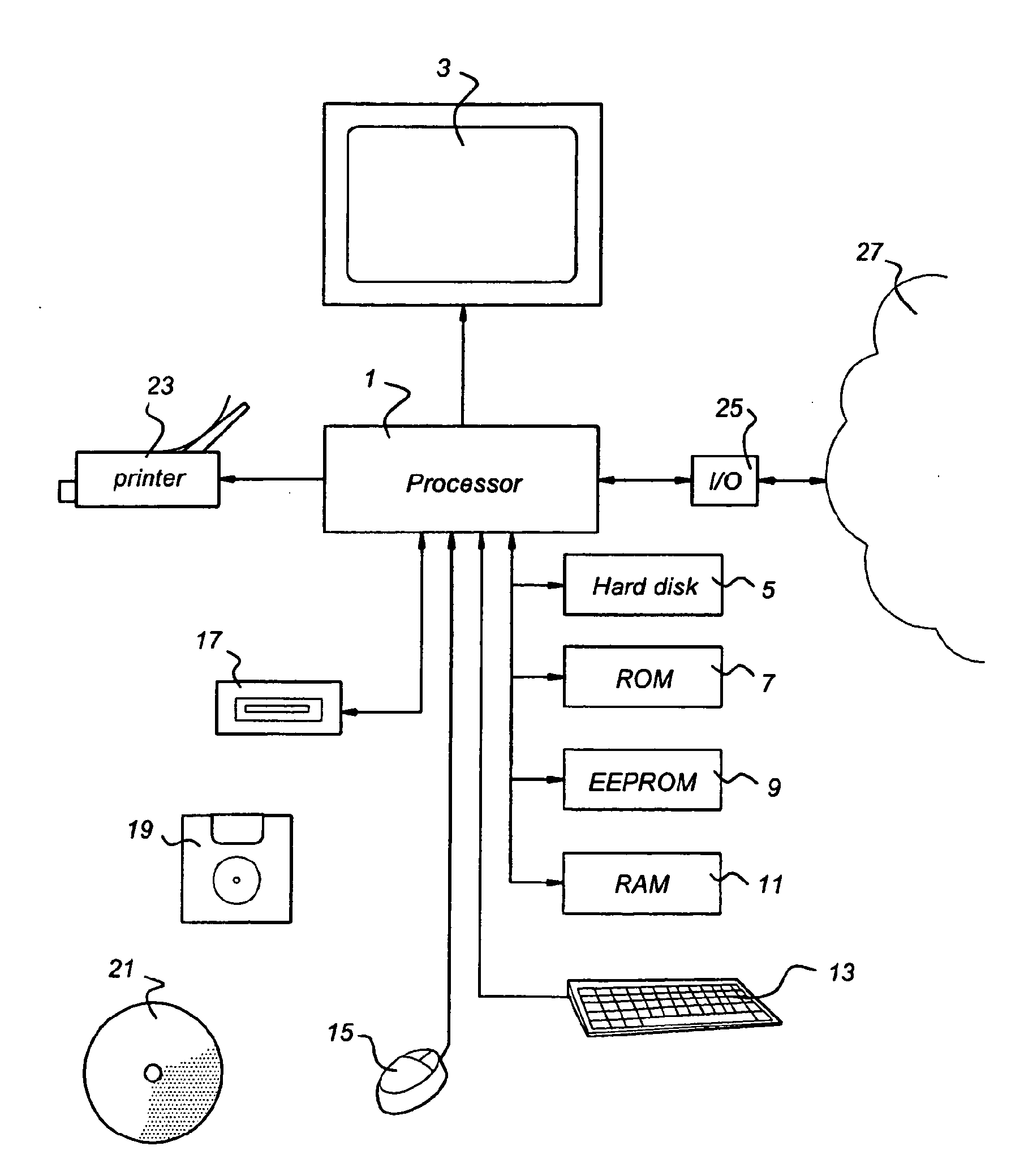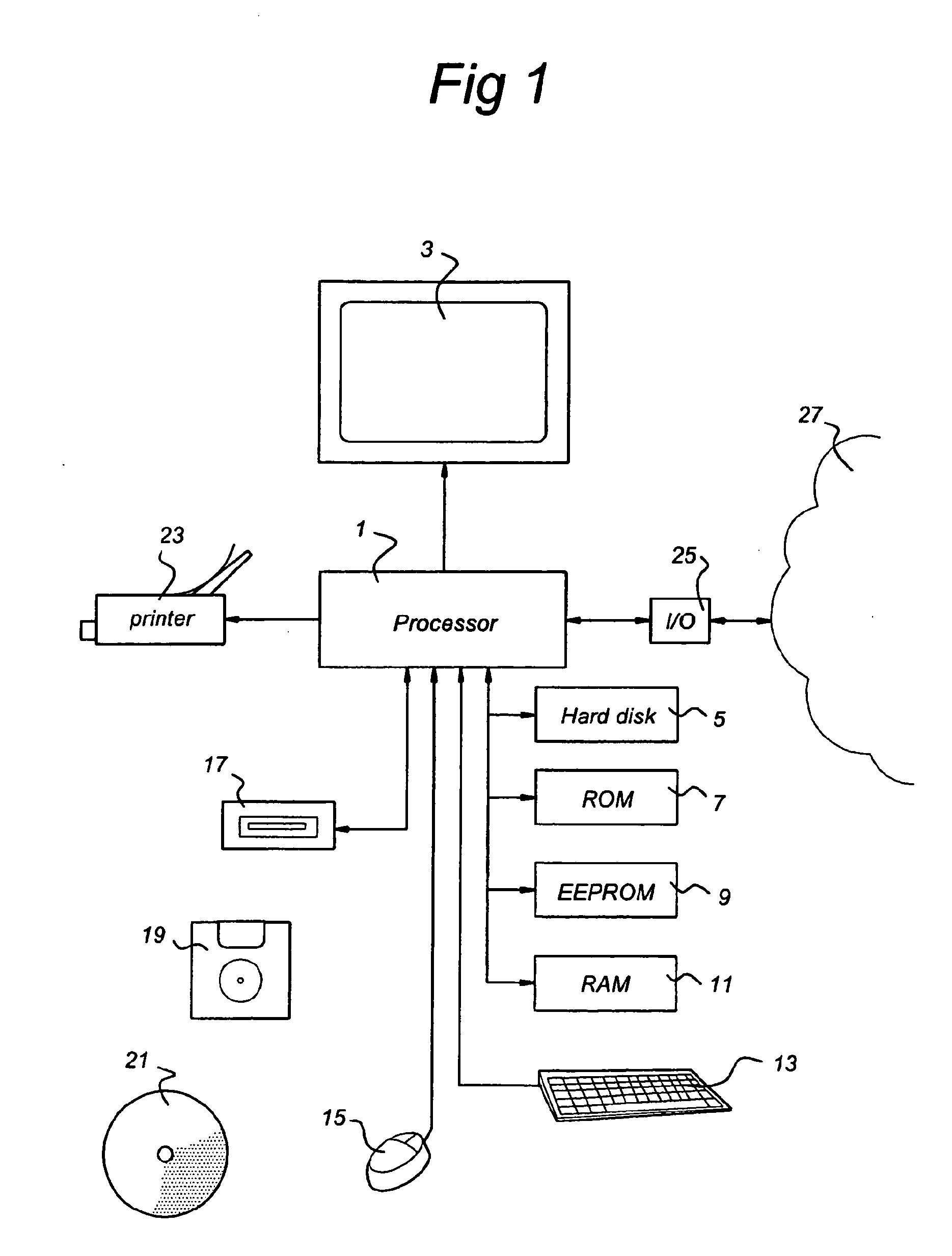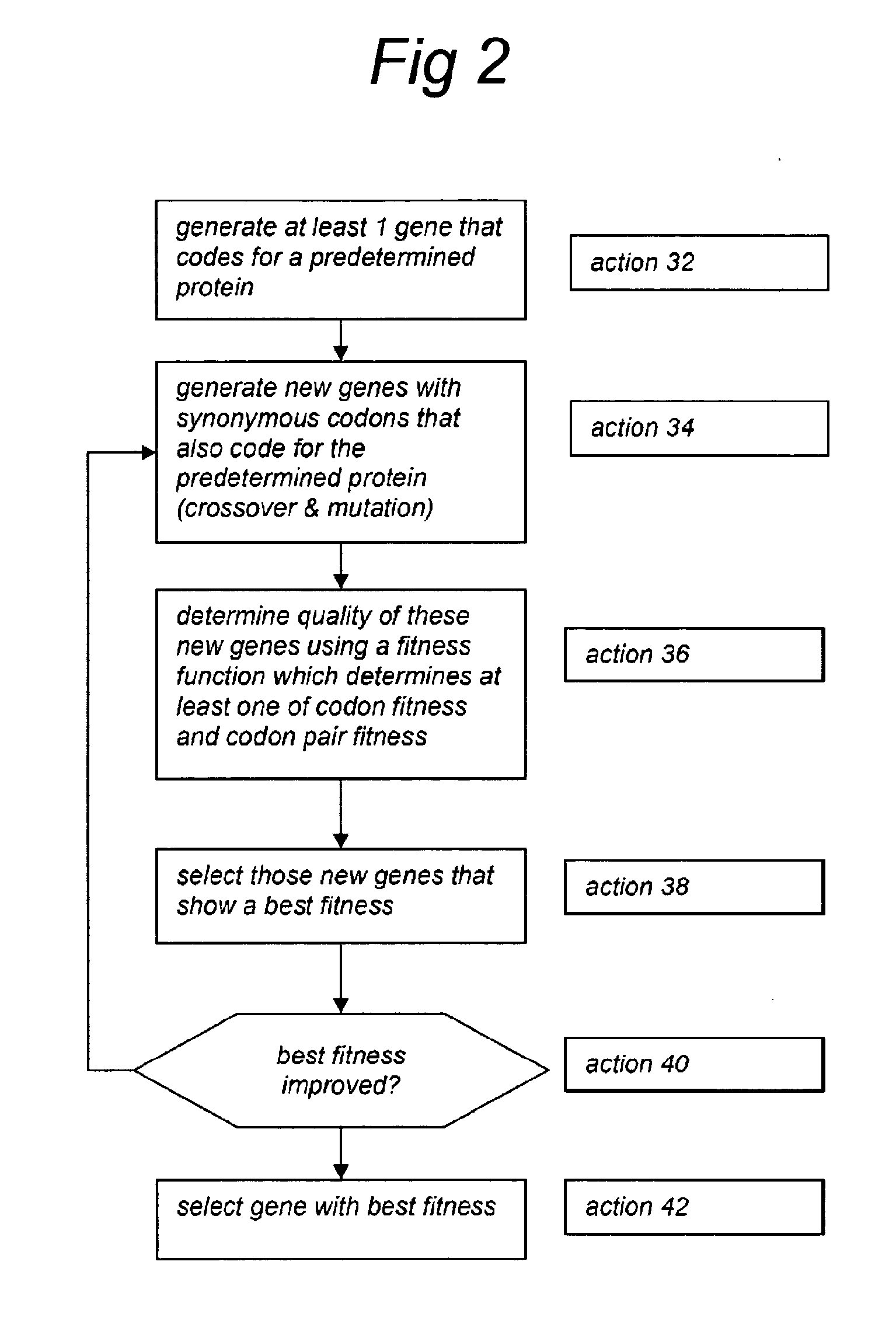Method for achieving improved polypeptide expression
a polypeptide and expression technology, applied in the field of producing a polypeptide in a host cell, can solve the problems of affecting the bias of the overlapping up- and downstream codon pairs, and none of the cited art discloses a method that combines optimization of both single codons and codon pairs
- Summary
- Abstract
- Description
- Claims
- Application Information
AI Technical Summary
Benefits of technology
Problems solved by technology
Method used
Image
Examples
example 1
1. Example 1
Analysis of Codon Pair Bias
1.1 Material and Methods
1.1.1 Data and Software
[0152]Codon pair analysis may be performed on coding sequences (CDS) in whole genome sequence data as well as partial groups derived of those (or a partial genome sequence, like for example cDNA / EST libraries, or even partial genome data from multiple genomes from related organisms). The tools used in the present invention read these data using FASTA files as input. The vast majority of all calculations have been performed in MATLAB 7.01 (The MathWorks, Inc., www.mathworks.com), but for some detailed analyses of the obtained results Spotfire DecisionSite 8.0 (Spotfire, Inc., http: / / www.spotfire.com / products / decisionsite.cfm) was used.
[0153]For A. niger, a FASTA file with predicted cDNA sequences for the full genome of CBS513.88 (Pel et al., 2007, Nat. Biotech. 25: 221-231) and a group of 479 highly expressed genes were used. Furthermore, since usually less than half of the >14,000 genes in A. niger...
example 2
2. Example 2
Use of a Method of the Invention for Construction of Improved DNA Sequences for Improving Production of the Aspergillus Niger Fungal Amylase Enzyme in A. Niger
[0215]Below, the method of the invention is applied to design novel nucleotide sequences for the AmyB (FUA) gene of A. niger, which are optimized in single codon and / or codon pair usage for improved expression in A. niger. This method can be applied the same way for the improvement of codon use of any nucleotide sequence.
2.1 Introduction
[0216]A concept of single-codon optimization by means of codon-harmonization was previously developed by the applicants of this invention and reported in the main text (see also example 3). In this example we show how one applied the method of the invention to design a gene that were optimized for both single codon and codon pair usage. In this specific case weight matrices are applied that have been created by applying two subsets of 2% and 4% of highly expressed genes of the full...
example 3
3. Example 3
Testing of the Method of the Invention for Construction of Improved DNA Sequences for Providing Improved Production of the Aspergillus niger Fungal Amylase Enzyme in A. niger
[0220]The method of the invention is below applied to the improvement of single codon and codon pair use of the AmyB gene of A. niger. This method can be applied the same way for the improvement of codon use and improved expression of any nucleotide sequence.
3.1 Material and Methods
3.1.1 Strains
[0221]WT 1: This A. niger strain is used as a wild-type strain. This strain is deposited at the CBS Institute under the deposit number CBS 513.88.
[0222]WT 2: This A. niger strain is a WT 1 strain comprising a deletion of the gene encoding glucoamylase (glaA). WT 2 was constructed by using the “MARKER-GENE FREE” approach as described in EP 0 635 574 B1. In this patent it is extensively described how to delete glaA specific DNA sequences in the genome of CBS 513.88. The procedure resulted in a MARKER-GENE FREE ...
PUM
| Property | Measurement | Unit |
|---|---|---|
| weights | aaaaa | aaaaa |
| nucleic acid | aaaaa | aaaaa |
Abstract
Description
Claims
Application Information
 Login to View More
Login to View More - R&D
- Intellectual Property
- Life Sciences
- Materials
- Tech Scout
- Unparalleled Data Quality
- Higher Quality Content
- 60% Fewer Hallucinations
Browse by: Latest US Patents, China's latest patents, Technical Efficacy Thesaurus, Application Domain, Technology Topic, Popular Technical Reports.
© 2025 PatSnap. All rights reserved.Legal|Privacy policy|Modern Slavery Act Transparency Statement|Sitemap|About US| Contact US: help@patsnap.com



